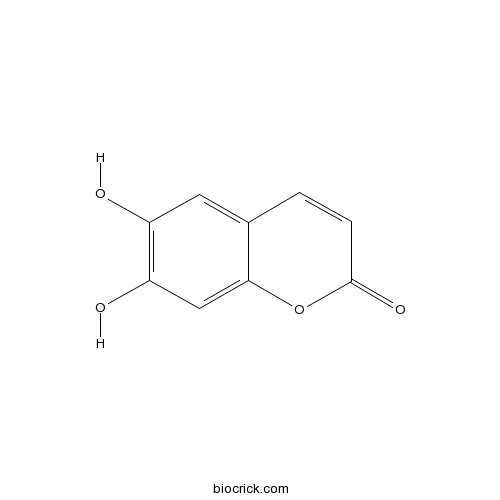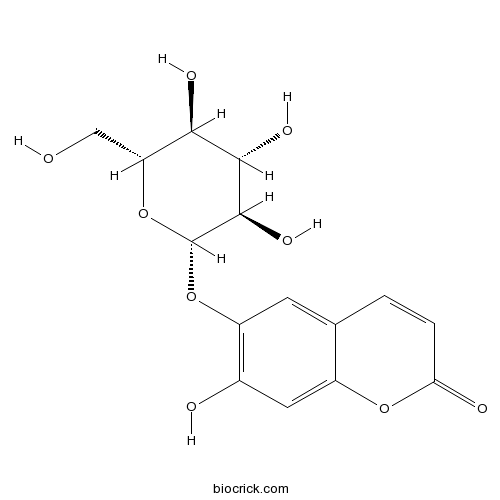Cardamine leucantha
Cardamine leucantha
1. The products in our compound library are selected from thousands of unique natural products; 2. It has the characteristics of diverse structure, diverse sources and wide coverage of activities; 3. Provide information on the activity of products from major journals, patents and research reports around the world, providing theoretical direction and research basis for further research and screening; 4. Free combination according to the type, source, target and disease of natural product; 5. The compound powder is placed in a covered tube and then discharged into a 10 x 10 cryostat; 6. Transport in ice pack or dry ice pack. Please store it at -20 °C as soon as possible after receiving the product, and use it as soon as possible after opening.
Natural products/compounds from Cardamine leucantha
- Cat.No. Product Name CAS Number COA
-
BCN5905
6,7-Dihydroxycoumarin305-01-1
Instructions

-
BCN5904
Esculin531-75-9
Instructions

Genet-specific DNA methylation probabilities detected in a spatial epigenetic analysis of a clonal plant population.[Pubmed: 28542457]
In sessile organisms such as plants, spatial genetic structures of populations show long-lasting patterns. These structures have been analyzed across diverse taxa to understand the processes that determine the genetic makeup of organismal populations. For many sessile organisms that mainly propagate via clonal spread, epigenetic status can vary between clonal individuals in the absence of genetic changes. However, fewer previous studies have explored the epigenetic properties in comparison to the genetic properties of natural plant populations. Here, we report the simultaneous evaluation of the spatial structure of genetic and epigenetic variation in a natural population of the clonal plant Cardamine leucantha. We applied a hierarchical Bayesian model to evaluate the effects of membership of a genet (a group of individuals clonally derived from a single seed) and vegetation cover on the epigenetic variation between ramets (clonal plants that are physiologically independent individuals). We sampled 332 ramets in a 20 m × 20 m study plot that contained 137 genets (identified using eight SSR markers). We detected epigenetic variation in DNA methylation at 24 methylation-sensitive amplified fragment length polymorphism (MS-AFLP) loci. There were significant genet effects at all 24 MS-AFLP loci in the distribution of subepiloci. Vegetation cover had no statistically significant effect on variation in the majority of MS-AFLP loci. The spatial aggregation of epigenetic variation is therefore largely explained by the aggregation of ramets that belong to the same genets. By applying hierarchical Bayesian analyses, we successfully identified a number of genet-specific changes in epigenetic status within a natural plant population in a complex context, where genotypes and environmental factors are unevenly distributed. This finding suggests that it requires further studies on the spatial epigenetic structure of natural populations of diverse organisms, particularly for sessile clonal species.
Development and reproductive potential of diamondback moth (Lepidoptera: Plutellidae) on selected wild crucifer species.[Pubmed: 24367918]
The diamondback moth, Plutella xylostella (L.), is an oligophagous insect that primarily feeds on members of the family Cruciferae. The development, survival, and reproductive potential of P. xylostella were studied on eight wild cruciferous species: Rorippa indica (L.) Hiern, Cardamine hirsuta L., Descurainia sophia (L.) Webb ex Prantl, Capsella bursa-pastoris (L.) Medic, Cardamine leucantha (Tausch) O. E. Schulz, Orychophragmus violaceus (L.) O. E. Schulz, Thlaspi arvense L., and Cardamine macrophylla Willd. Developmental durations of immatures from egg to adult emergence differed significantly among the plant species, with the longest period recorded on C. macrophylla (20.8 d) and the shortest on R. indica (15.8 d). The female pupae of P. xylostella reared on C. leucantha and T. arvense were lighter (4.2 and 4.3 mg/pupa) than those reared on other hosts (5.2-6.5 mg/pupa), and the male pupae from T. arvense were the lightest (3.1 mg/pupa) among all colonies. Survival from egg to adult emergence ranged from 95.7% on R. indica to 48.8% on T. arvense. The longevity (10.1 d) of P. xylostella female and the oviposition period (7.7 d) were the longest when larvae fed R. indica than those that fed on other wild hosts. Female adults of P. xylostella from O. violaceus, C. macrophylla, and Ca. bursa-pastoris had higher fecundity (305-351 eggs/female) than from other wild host plants, whereas that from R. indica had the lowest fecundity (134 eggs/female). C. hirsuta was the best wild host plant for P. xylostella because of the highest intrinsic rates of increase (rm = 0.2402), whereas T. arvense was the least favorable hosts with the lowest intrinsic rates of increase (rm = 0.1577). The results from this study will be useful for interpretation of the performance and population dynamics of P. xylostella on wild hosts and cultivated cruciferous vegetables.
Isolation and characterization of microsatellite loci in a clonal herb, Cardamine leucantha (Brassicaceae).[Pubmed: 22114221]
Microsatellite markers were developed to analyze the clonal diversity and population genetic structure of a clonal plant, Cardamine leucantha.
Comparison of light harvesting and resource allocation strategies between two rhizomatous herbaceous species inhabiting deciduous forests.[Pubmed: 19156358]
Light conditions on the floor of deciduous forests are determined by the leaf dynamics of canopy trees and gap formation. Such spatiotemporal variations of light availability should affect the resource partitioning strategies of understory herbs. Although rhizomatous species are common in understory, relationships between rhizome structure, vegetative growth, and sexual reproduction are unclear in terms of carbon allocation. We compared the photosynthetic characteristics and carbon translocation patterns in the under-canopy and light-gap sites between two summer-green perennial species: Cardamine leucantha with an annual long rhizome, and Smilacina japonica with a perennial short rhizome system. Flowering of both species occurs in early summer under decreasing light availability. In the light-gap, C. leucantha maintained high photosynthetic activity due to continuous leaf production, resulting in higher seed production than in the under-canopy. In contrast, the photosynthetic rate of S. japonica, producing leaves simultaneously, decreased with time irrespective of light conditions, resulting in stable seed production in both sites. Although seasonally decreasing light availability commonly restricts carbon assimilation of understory herbs, the responses of resource partitioning to variations in light availability depend greatly on the belowground structure of individual species.


